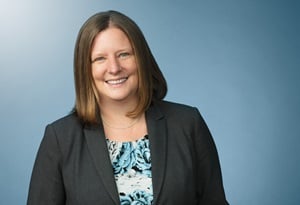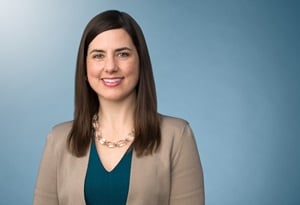Visa Options and Immigration Strategies for IT Professionals and Companies
Technology companies, including IT consulting companies, IT service providers and software designers, seek to employ the best and the brightest IT professionals to keep IT systems secure and to deliver innovative solutions. With this focus on talent, all companies need to understand the employment-based immigration factors that affect their U.S. workforces since candidates can come from all over the world. Especially in periods of low unemployment, IT companies need to be as competitive as possible in recruiting, hiring and retaining top performers.
This article provides the latest information on immigration topics and options affecting technology companies and their highly skilled workforce.
Employment-Based Nonimmigrant (Temporary) Visa Categories
H-1B – Specialty Occupation
The H-1B visa is one of the most common visas for employing foreign employees in the IT field. The H-1B visa classification is for specialty occupations, which means occupations that require: (1) theoretical and practical application of a body of highly specialized knowledge; and (2) attainment of a bachelor’s or higher degree in the specific specialty (or its equivalent) as a minimum requirement for entry into the occupation. The foreign national must meet the requirements for the position, including having a bachelor's degree (or its equivalent in years of work experience) or higher in a field related to the occupation. The employer must also demonstrate that it is offering at least the prevailing wage for the occupation in the proposed labor market.
For many IT companies, software engineers and database developers are typical H-1B-eligible positions. Systems administrators and other computer systems analysts may sometimes – although not always – be approved for H-1B visas. Lower level computer programmers or computer support specialists often do not qualify for H-1B status. Understanding the limitations of this visa category and its applicability to your workforce requires close counsel with immigration counsel.
A significant challenge for most employers seeking to sponsor an H-1B worker is the annual limit on the number of H-1B visa spots available. The annual cap is 65,000 new H-1B visas plus an additional 20,000 new H-1B visas for individuals who have graduated with a master’s degree or above from a U.S. university (for a total of 85,000). Employers can only file petitions for these cap-subject visa spots during the first few days of April each year. For the past several years, more petitions have been filed than visas available. When this happens, USCIS conducts a computer-generated random selection process, commonly known as the H-1B lottery. The lottery is typically conducted in mid-April.
H-1B approvals are usually granted in three-year increments. A person is generally limited to a total of six years working in H-1B status, though additional time beyond six years may be available if a permanent residency (green card) case is underway.
We should note that scrutiny on H-1B petitions has increased dramatically in the past two years. The immigration service has issued Requests for Evidence (RFEs) asking for additional information at an unprecedented rate, causing processing delays and frustration for many H-1B employers and potential employees. The rate of denials has also significantly increased on all types of H-1B cases including H-1B cap, H-1B change of employer and H-1B extensions.
TN – Mexican and Canadian Professionals
The TN is a visa option for Mexican and Canadian citizens working in specified professional occupations, including Computer Systems Analysts, Engineers, Statisticians and Mathematicians. To qualify as an Engineer, Statistician or Mathematician, the beneficiary must have a degree in the field related to the category. Computer Systems Analysts can qualify if they have a related degree or if they have a post-graduate diploma and at least three years of experience. TN status is generally granted in three-year increments. There is no limit on the number of years one can work in TN status, though the employment must be temporary. The TN application process can be relatively quick, particularly for Canadian citizens, so it is a good alternative for candidates from Canada or Mexico.
L-1 Visa – Intracompany Transfer
The L-1 visa category is intended for individuals working in either a specialized knowledge or managerial/executive capacity abroad for at least 12 months in the previous three years to come to the U.S. to work for an affiliated entity in either a specialized knowledge or managerial/executive capacity.
Companies must demonstrate that their IT professionals possess more than the usual level of knowledge and/or sophistication with proprietary applications, systems or processes to qualify for an L-1B specialized knowledge visa. Like H-1Bs, this category has come under scrutiny, especially for IT workers, in recent years. Even so, this can be a good option for developers of software that will be implemented in the U.S. or for IT directors with managerial responsibilities who will be transferred to the U.S. to serve in a similar managerial capacity.
There are no numerical limits on L-1 visas. For L-1A managers and executives, the total period of authorized employment is seven years (three years of initial validity plus two two-year extensions). For L-1B specialized knowledge workers, that total period of authorized employment is five years (three years of initial validity plus one two-year extension).
E-3 – Australian Professional
Australian citizen candidates who otherwise qualify under the H-1B standards described above, including Software Engineers, may seek E-3 status. Although infrequently used, employers should keep the E-3 category in mind for potential Australian candidates.
H-1B1 – Chile and Singapore Professionals
Candidates who are citizens of Chile and Singapore who otherwise qualify under the H-1B standards described above may seek H-1B1 status. Although infrequently used, employers should keep the H-1B1 category in mind for potential Chile and Singapore candidates.
O-1 – Extraordinary Ability
A limited number of candidates may qualify for an O-1 visa, which is reserved for individuals of “Extraordinary Ability or Achievement.” This visa requires evidence that the candidate has received a major, internationally recognized award, such as a Nobel Prize, or evidence of at least three of the following:
- Receipt of nationally or internationally recognized prizes or awards for excellence in the field of endeavor
- Membership in associations in the field for which classification is sought which require outstanding achievements, as judged by recognized national or international experts in the field
- Published material in professional or major trade publications, newspapers or other major media about the candidate and the candidate’s work in the field for which classification is sought
- Original scientific, scholarly or business-related contributions of major significance in the field
- Authorship of scholarly articles in professional journals or other major media in the field for which classification is sought
- A high salary or other remuneration for services as evidenced by contracts or other reliable evidence
- Participation on a panel, or individually, as a judge of the work of others in the same or in a field of specialization allied to that field for which classification is sought
- Employment in a critical or essential capacity for organizations and establishments that have a distinguished reputation
O-1 approvals are generally granted for an initial three-year period. This can be a good option for scientists and others with significant international contributions in the IT field. This category is usually not appropriate for most IT workers.
F-1 Students
Most foreign students in the U.S. have F-1 student visas and can work only in very narrow circumstances. F-1 students are generally allowed to work for one year after graduation in Optional Practical Training (OPT). They may work for any employer in OPT if the work is closely related to their field of study. Students in STEM fields, including computer science and engineering, may seek OPT work authorization for an additional 24 months in certain circumstances. To qualify for the STEM extension, employers must be enrolled in E-Verify and must complete a detailed training plan.
B-1 Visa - Business Travel
The B-1 visa is available to foreign nationals for temporary business visits to the U.S. The B-1 visa is available for business travel for a specific and limited period. Permissible business activities include, but are not limited to, consulting with colleagues, participating in short-term training, attending professional conventions or conferences, or negotiating a contract. The maximum amount of time permitted in B-1 status on any one trip is one year. Individuals from certain countries may be eligible to enter the U.S. without a visa under the Visa Waiver Program.
B-1 visitors are prohibited from engaging in any hands-on, productive work. They may not be employed in the U.S. and generally may not be paid. IT workers coming to the U.S. to work on a project must have work authorization such as H or L status. The B-1 visa is not an option for such project work.
Permanent Residency (Green Card) Process
The above nonimmigrant visa categories are all temporary. An employee employed in one of these categories may be allowed to work for a few years in the United States. If the company wishes to employ the employee beyond the time limit of the nonimmigrant visa category, the company must sponsor the employee for permanent residency, commonly known as a “green card.” Permanent resident status authorizes a foreign national to reside and work in the U.S. permanently.
The permanent residency process usually takes at least a few years and much longer if the employee is from India or China, so employers generally start the process within the first couple years of the employee’s temporary visa employment. Some of the temporary visa categories (such as TN) do not provide a good platform from which to seek permanent residency, so it is often necessary to first change the employee’s status to another visa category that is a good platform for permanent residency (such as H-1B).
There are generally three steps to the permanent residency process:
- PERM labor certification
- I-140 immigrant visa petition
- I-485 adjustment of status application
The PERM labor certification process requires the employer to advertise and conduct a good faith recruitment effort to see if there are more qualified U.S. applicants available for the position. The employer must also demonstrate that it is offering the prevailing wage for the occupation in the proposed geographic location. The advertising and recruitment must be conducted according to strict requirements.
If PERM is approved, the employer then files an I-140 petition. The I-140 petition process confirms that the foreign national meets the requirements for the position and that the employer can pay the required salary.
After I-140 approval, depending on the foreign national’s country of birth, there may be a wait for a green card quota number to become available. The wait could be a few months or could extend to a few years or more. Once a quota number is available, I-485 adjustment of status applications are filed for the foreign national and immediate family members. Permanent resident status is granted and green cards are issued upon approval of the I-485 applications.
The permanent residency process usually takes at least a few years and much longer if the employee is from India or China, so employers generally start the process within the first couple years of the employee’s temporary visa employment.
A very limited number of foreign nationals employed in the IT field are eligible to skip the PERM labor certification step. Their green card cases start with an I-140 petition filing in either the Multi-National Executive/Manager, Outstanding Professor/Researcher or the Extraordinary ability categories. The standards for these categories are high:
Multi-National Executive/Manager: The employee must be employed abroad in that capacity for at least one of the past three years and seek to enter the U.S. to provide executive/managerial service to the same employer or to a subsidiary, parent, branch or affiliate. This can sometimes be a good option for IT directors or other high-level IT managers.
Outstanding Professor or Researcher: The candidate must demonstrate international recognition for outstanding achievements in a particular field. The employee must be able to show international recognition as outstanding in a specific academic field; have at least three years of experience in teaching or research, entering to accept tenured or tenure track teaching or comparable research position at a university, other institution of higher education or private company.
Evidence must be submitted in at least two of the following categories:
- Evidence of receipt of major prizes or awards for outstanding achievement
- Evidence of membership in associations that require their members to demonstrate outstanding achievement
- Evidence of published material in professional publications written by others about the candidate's work in the academic field
- Evidence of participation, either on a panel or individually, as a judge of the work of others in the same or allied academic field
- Evidence of original scientific or scholarly research contributions in the field
- Evidence of authorship of scholarly books or articles (in scholarly journals with international circulation) in the field
Extraordinary Ability: The candidate must be able to demonstrate extraordinary ability in the sciences, arts, education, business or athletics through sustained national or international acclaim. The achievements must be recognized in the field through extensive documentation. The candidate must provide evidence in at least three of the following categories:
- Evidence of receipt of nationally or internationally recognized prizes or awards for excellence
- Evidence of membership in associations in the field which demand outstanding achievement of their members
- Evidence of published material about the candidate in professional or major trade publications or other major media
- Evidence that the candidate has been asked to judge the work of others, either individually or on a panel
- Evidence of original scientific, scholarly, artistic, athletic or business-related contributions of major significance to the field
- Evidence of authorship of scholarly articles in professional or major trade publications or other major media
- Evidence that the candidate’s work has been displayed at artistic exhibitions or showcases
- Evidence of performance of a leading or critical role in distinguished organizations
- Evidence that the candidate commands a high salary or other significantly high remuneration in relation to others in the field
- Evidence of commercial successes in the performing arts
These are not typical permanent residence categories for IT occupations. However, if an IT professional has produced original work and is considered to be at the top of their IT field, the EB-1 Extraordinary Ability category is an option to explore, keeping in mind that this category (like others described) is under considerable scrutiny by USCIS.
Other Immigration Considerations for IT Workers
IT work often happens at client sites or “third-party placements.” Because H-1B petitions are location-specific, additional care must be taken when employees will work at a location other than a company’s office. Amended H-1B petitions must be filed before an employee begins work at a location other than the location specified in the H-1B petition, and additional documentation (such as Statements of Work, Master Services Agreements and other evidence) must be submitted if the location is not the employer’s own location. There are certain rules for employees who will spend all or part of their time at a location other than the employer work site. Roving employees, short-term placements and others who will spend time outside of the employer site should take care to comply with immigration rules. Companies who use IT contractors should also be aware they may be asked to provide letters or other documentation of the employer-employee relationship.
Employers whose workforce consists of a significant number of H-1B workers need to be aware of the rules for H-1B dependent employers and the additional attestations and fees associated with petitions filed by these employers.
Finally, employers should understand the rules about “benching” H-1B employees.
Securing approval to employ foreign nationals in the United States is becoming more difficult. By thinking ahead and strategically about appropriate immigration categories, companies can hire talent from all over the world.
The material contained in this communication is informational, general in nature and does not constitute legal advice. The material contained in this communication should not be relied upon or used without consulting a lawyer to consider your specific circumstances. This communication was published on the date specified and may not include any changes in the topics, laws, rules or regulations covered. Receipt of this communication does not establish an attorney-client relationship. In some jurisdictions, this communication may be considered attorney advertising.




